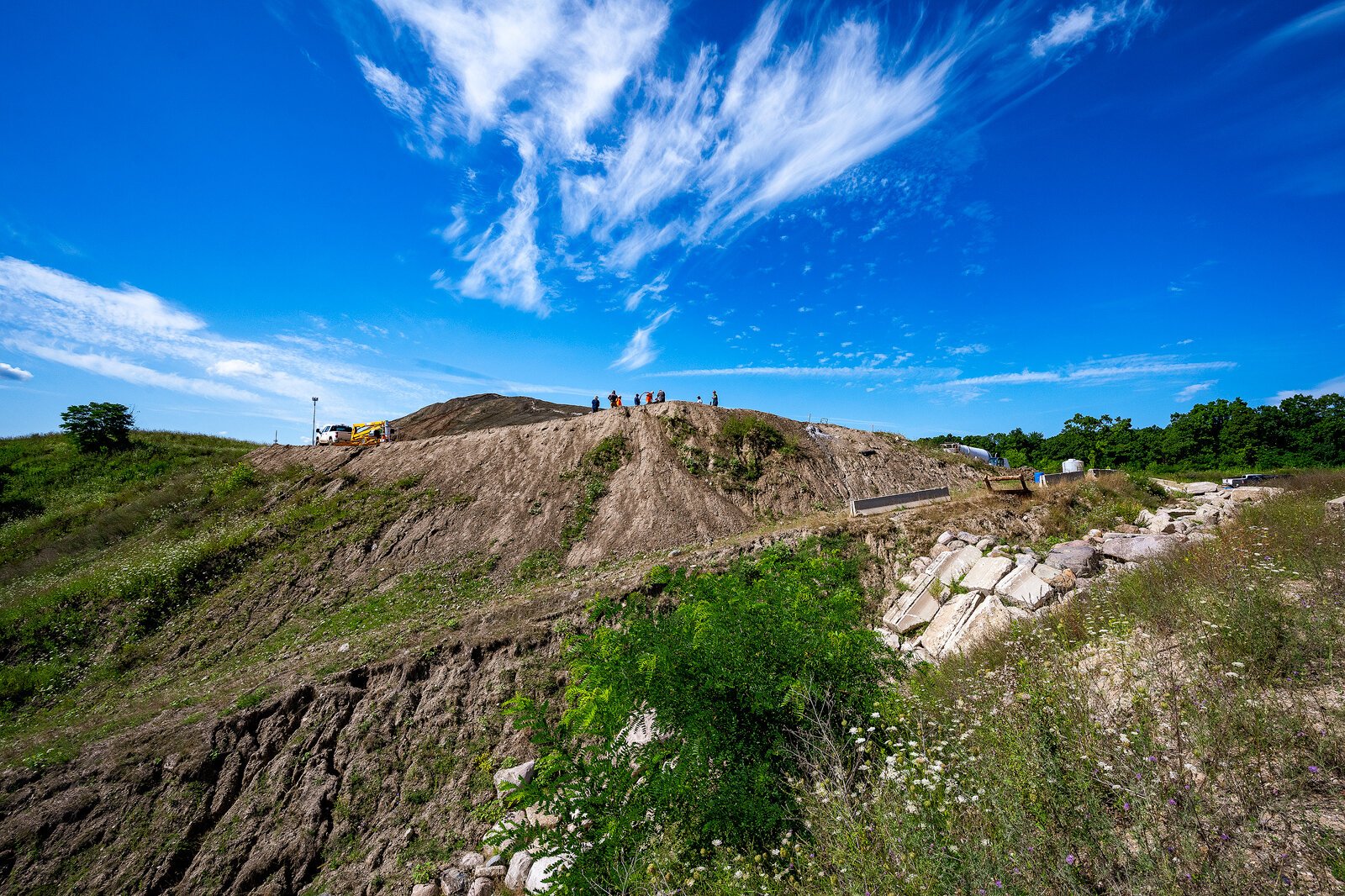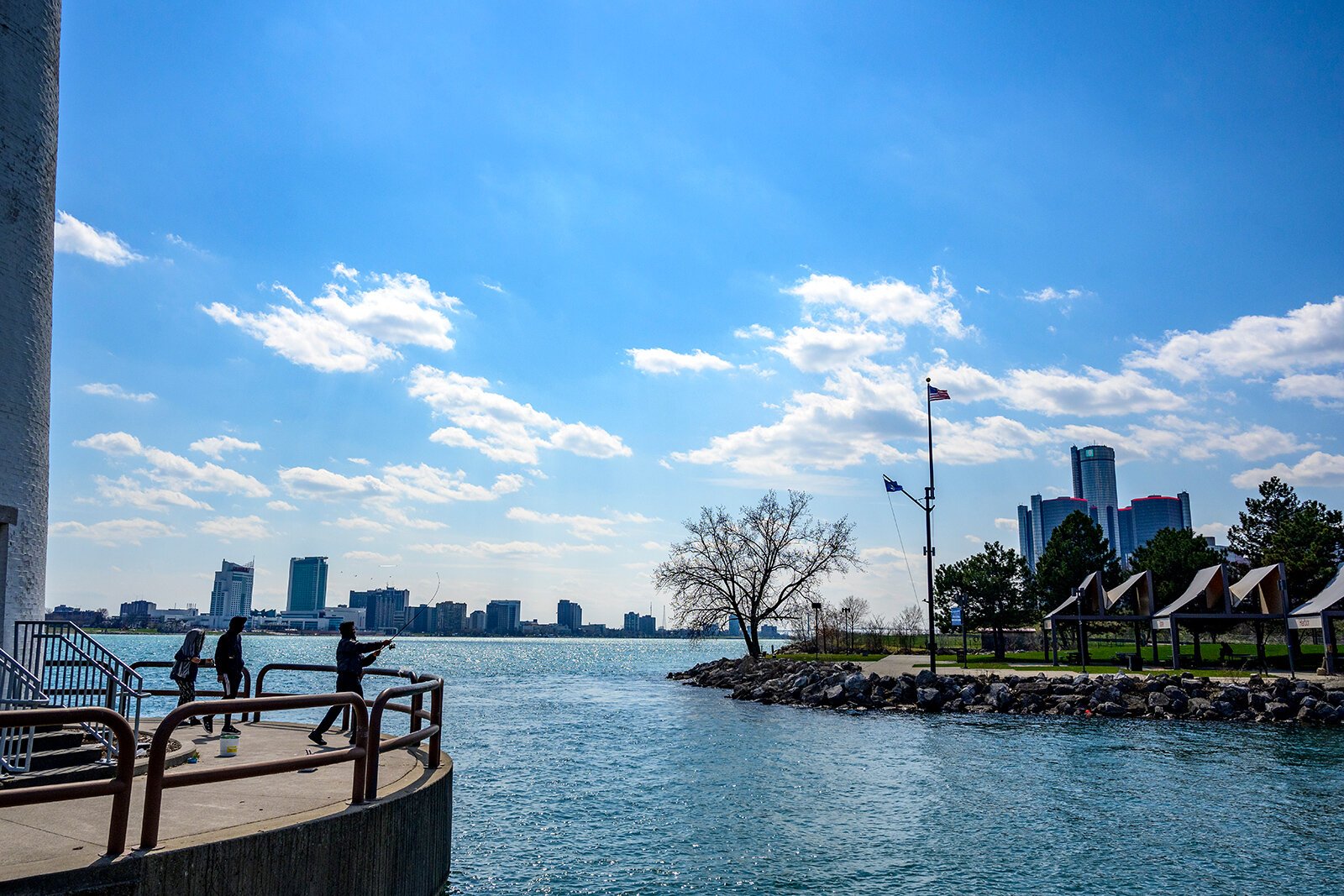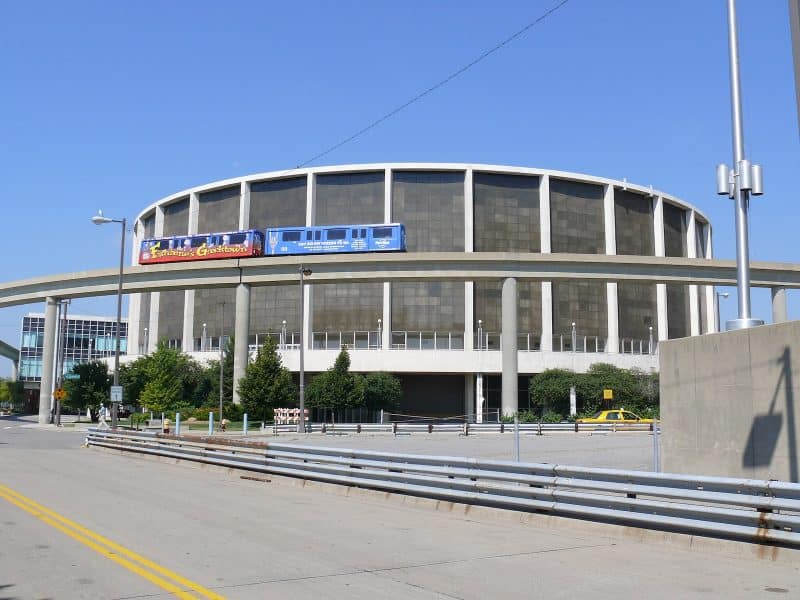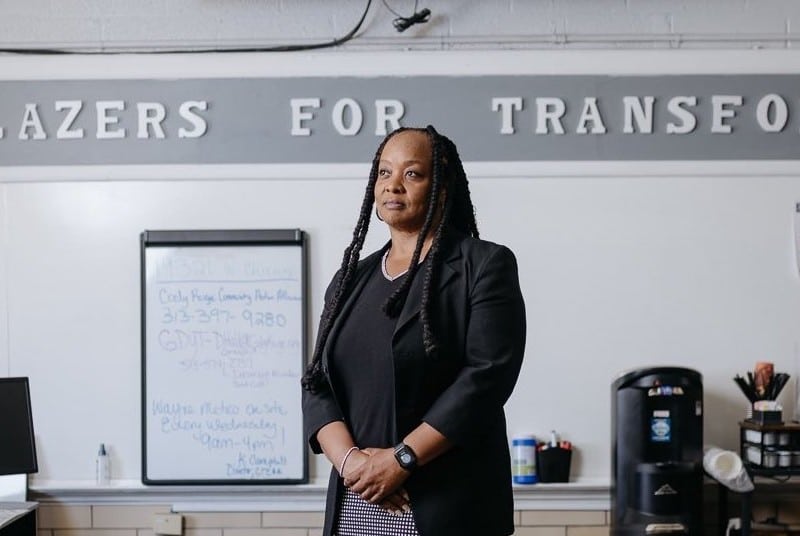The Michigan Department of Natural Resources has created, managed, or otherwise supported numerous natural areas in Southeast Michigan over the past century.
This article is part of Inside Our Outdoors, a series about Southeast Michigan’s connected parks, greenways, and trails and how they affect residents’ quality of life. It is made possible with funding from the Michigan Trails and Greenways Alliance.
Michigan’s Department of Natural Resources (DNR) will celebrate its 100th anniversary this year – and, in Southeast Michigan, a long legacy of fostering beloved outdoor oases in a highly urbanized region.
Just ask local outdoor enthusiasts like Chuck Murdock, president of the Friends of Maybury State Park, a volunteer group that supports the DNR-managed park in Northville. Maybury is Wayne County’s first state park, sporting nearly 1,000 pristine acres of meadows and woodlands, a working farm and equestrian stables, an extensive trail system, a campground, and an eight-acre pond with a pier.
“It’s a beautiful place in the middle of the suburbs and it’s big enough you can walk in and you can get lost in the forest,” Murdock says. “People just need a place to go and to unwind and relax. It’s a great family place to gather.”
Maybury is just one of many outdoor recreation destinations the DNR has created, managed, or otherwise supported in Southeast Michigan over the past century. Here’s a look back at the agency’s role in the region, and where it may be headed next.
Looking back on the DNR
Originally known as the Michigan Department of Conservation, the DNR was created by state legislators in March 1921. It was established to bring a number of different state responsibilities — like state park programs, fish and game law enforcement, and burgeoning conservation efforts — under the umbrella of one cohesive department. The department was given its current name in 1968, a move that signified the expansion of its mission to encompass “the conservation, protection, management, use and enjoyment of the state’s natural and cultural resources for current and future generations.”
The DNR began making headway in Southeast Michigan in 1922, when the directors of the Dodge Brothers Co. donated 11 parks totaling 600 acres to the state in honor of the company’s founders. Two weeks after that gift, Howard Bloomer, who had worked for the Dodge Brothers as an attorney, followed suit and donated 211 acres of his own holdings to create four additional state parks in Oakland County. Over time, a number of these original Dodge and Bloomer parks were consolidated into larger state parks or transferred to local governments.
During the New Deal era of the 1930s, these existing parks received substantial upgrades as President Franklin D. Roosevelt’s administration allocated billions of dollars of federal money to build trails, enhance terrain, and build structures at state parks nationwide. In 1944, the DNR made another major investment in Southeast Michigan. With the support of the state legislature, the agency added 10 additional parks to the region as part of a 100,000-acre recreational land use plan.
The latter half of the 20th century brought several financial innovations that have since proved vital to the DNR’s work. In 1960, Michigan legislators passed the state Motor Vehicle Permit and Bond Authorization Law, and in 1961 the first Michigan state parks motor vehicle entry fee was put into place. Also in 1961, state lawmakers passed a $5 million bond geared towards improving state parks. And in 1976, Michigan’s legislature established the Michigan Natural Resources Trust Fund (MNRTF) to create a sustained source of financing for recreational land acquisition and resource protection drawn from oil and gas revenues generated from state-owned mineral rights. Since MNRTF’s creation, the DNR has financed over $1 billion in state, local, and county projects through the fund.
Dan Lord, who manages the DNR’s grant programs, credits state leaders as well as his predecessors at the department with having the “vision to buy up massive amounts of land and preserve them for outdoors recreation,” but he’s quick to note that his agency’s work hasn’t ended there. Over the past 10 to 20 years, as young Michiganders have increasingly flocked to the state’s urban areas, the DNR has responded by investing more in cities like Detroit. Lord notes that the agency opened what is now William G. Milliken Park in the city in 2004, moved its Southfield customer service center to the Outdoor Adventure Center in Detroit in 2014, and also began operating Belle Isle as a state park in 2014.
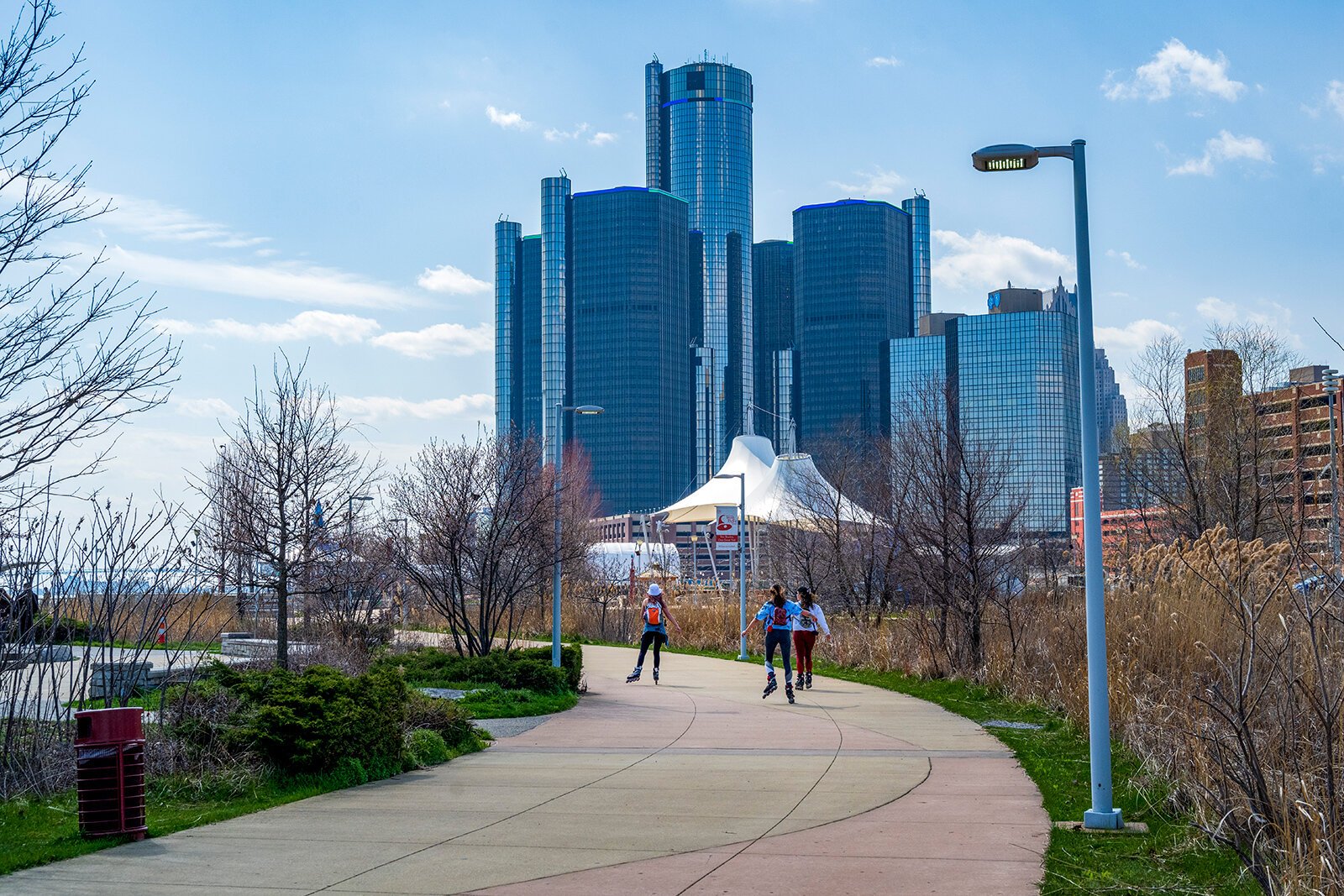
“Jump around in time and you see these big shifts from our representations [with] communities out in the rural areas back to the downtown area,” he says.
Embracing partnership
While state parks are a highly visible part of the DNR’s work, the agency’s recreational portfolio includes much more. The department also manages boating access areas like the Belleville Lake Boat Access Site and the Harley Ensign Boat Launch in Harrison Township. There are also state game areas, like the recently acquired 640-acre Crystal Waters State Game Area in Monroe County, which is not yet open but has been eagerly anticipated by local hunters.
The DNR has also been working hard in recent years to support the state’s expanding non-motorized trail system. Through MNRTF grants in southeast Michigan, for example, it’s contributed $300,000 to help build an Iron Belle Trail connector to Shelby Township’s River Bends Park and a combined $500,000 to acquire land for and build segments of the Iron Belle/Border-to-Border Trail in Washtenaw County. In Detroit, it’s approved more than $3.4 million in MNRTF money to help purchase land from the Conrail railroad that will be used for a portion of the Joe Louis Greenway.

That work involves a lot of collaboration between the DNR and local groups. The Huron-Clinton Metroparks, for example, have in many cases used MNRTF grants to acquire land for and develop parks in the region.
The DNR works with federal partners as well. In 2019 it teamed up with the National Park Trust, the Carls Foundation, and the city of Monroe to help upgrade the River Raisin National Battlefield, an area adjacent to Sterling State Park, which was the site of a battle during the War of 1812. Through its grants, the DNR donated more than $500,000 of a total $711,000 to acquire and restore seven parcels at the battle site.
The Holly Oaks ORV Park is another site where the DNR has been working hand-in-hand with other entities to fulfill its mission. The 106-acre site, Southeast Michigan’s first park designed explicitly for off-road vehicles, opened last year in Holly. The site was acquired by the DNR from a gravel mining company and is currently being managed by Oakland County.

Lord says the DNR has been trying to increasingly emphasize partnerships with local agencies in recent years.
“When someone thinks of the DNR, they might think of a fish or wildlife biologist, a forester, or a state park,” he says. “We’re trying to build an identity as a partner for recreation. [We’re] putting dollars out there every single year and you can see it resonating within different communities.”
Reflecting on the outdoors
The recreational resources the DNR has fostered are popular – now more than ever before. Last year 36 million people visited Michigan state parks, according to the Pew Research Center. That’s a significant jump from the 27 million visitors seen during an average year prior to the COVID-19 outbreak. Similarly, the state saw a 95% increase in new hunting license applications from March to October of last year.
Traci Sincock, who oversees Maybury State Park as a DNR unit supervisor, says annual attendance there has more than doubled from around 500,000 people to 1.1 million.
“We’ve been popular,” she says. “People come out to recreate and have enough space to social distance. Even on a rainy Friday afternoon, there’s a parking lot full of cars. People come all season.”
Michelle Martinez, a Detroiter and acting executive director of the Michigan Environmental Justice Coalition, has a special place in her heart for Maybury State Park, which she enjoys visiting with her family.
“It’s close enough to Detroit that it feels like a special retreat from the brownfields and sulfur skyline,” she says. “I take my kids to see the horses, and adjacent there is a paid space to see farm animals too.”
Shaun Nethercott, an arts and community consultant who also lives in Detroit, is a fan of Highland State Recreation Area in White Lake, where she and her husband enjoy vacationing in a rustic cabin. But her most frequently visited park, William G. Milliken State Park, is quite close to home. Nethercott likes to bike there several times a week, calling it “a little oasis in the middle of the city.”
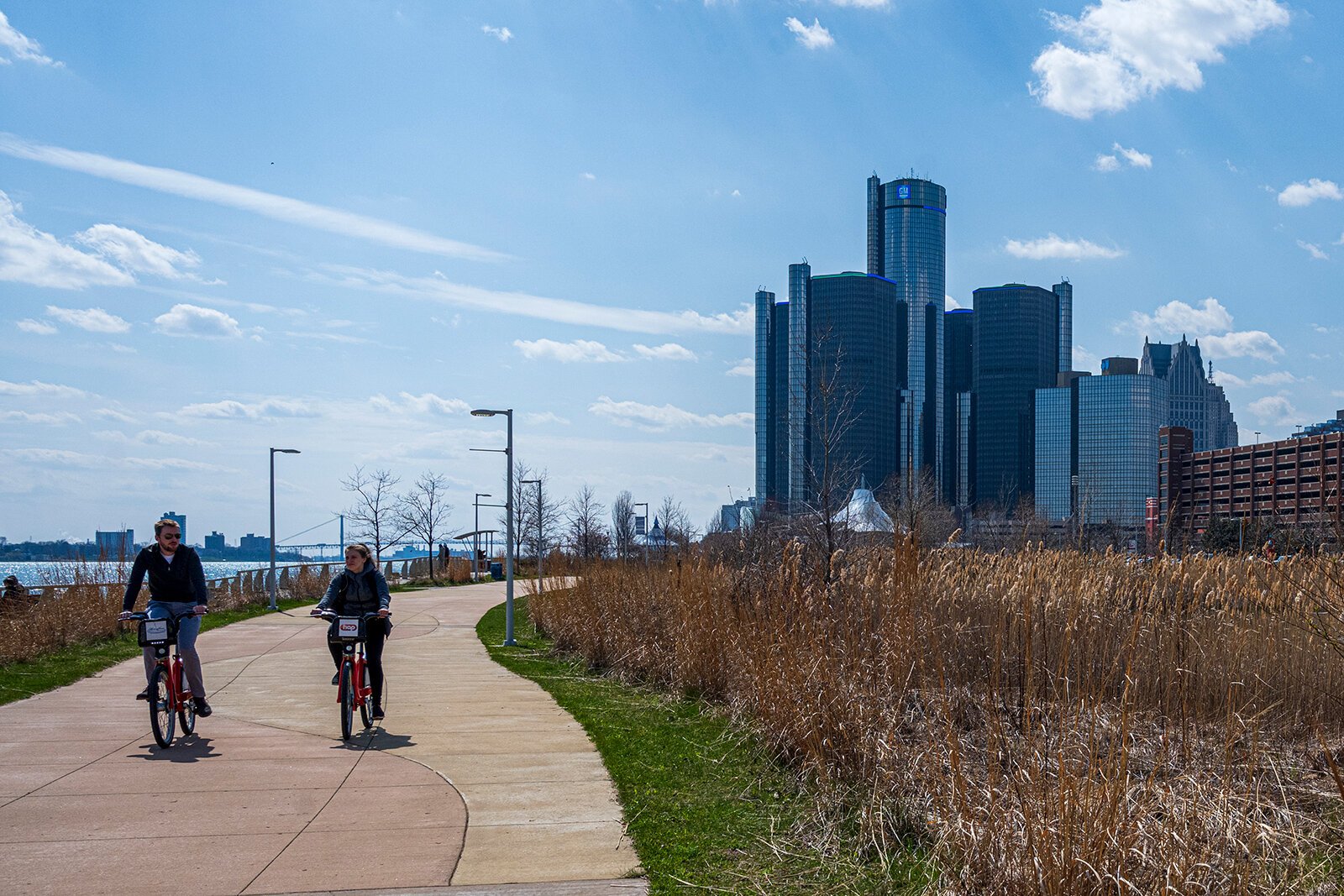
“We need to be better connected to the environment, especially in an urban environment,” says Nethercott. “We need to have these spaces where we can really feel the earth alive.”
Despite her love for Maybury and other parks in the region, Martinez thinks there’s still room for improvement.
“I wish there were more intention to programming and recruitment for Black and brown folks,” she says. “Diversity of usage of the parks system is a place where state parks could really grow.”
Keeping up with demand
While Michigan’s state parks are currently seeing record levels of use, that’s not all positive for the DNR. Increased usage also means more wear and tear for parks that are already in need of repairs and upgrades.
“Our park system has a really unbelievable backlog of capital needs to make maintenance improvements in so many of our state parks,” says Lord.
Michigan motorists can support the state park system by getting a Recreation Passport when they renew their vehicle registration. Opting into the program during registration costs between $6-12, depending on the vehicle type. Revenue from the passports helps support DNR sites and programming, as well as local recreation improvements through Recreation Passport grants.
Michigan Gov. Gretchen Whitmer is also taking steps to address state parks’ maintenance needs. Last month she announced a $250 million proposal to direct COVID-19 pandemic stimulus funding from President Biden’s American Rescue Plan to address existing issues and fund new investment in the state’s parks and trails. Whitmer has also called on the state legislature, which would need to approve the plan, to work with her on developing a long-term strategy to fund state parks.
Jon Mayes, a DNR grant manager who works with Lord, feels the proposal could play a critical role in keeping the state park system on stable footing.

“We’ve been falling behind and know that,” he says. “Right now there’s a heightened sense of importance about what state parks and recreation sites offer. Gov. Whitmer’s proposal is trying to get us back to the level of service and functionality for our park system that we all desire to see.”
David Sands is a freelance writer based in Detroit.
All photos by Doug Coombe.
